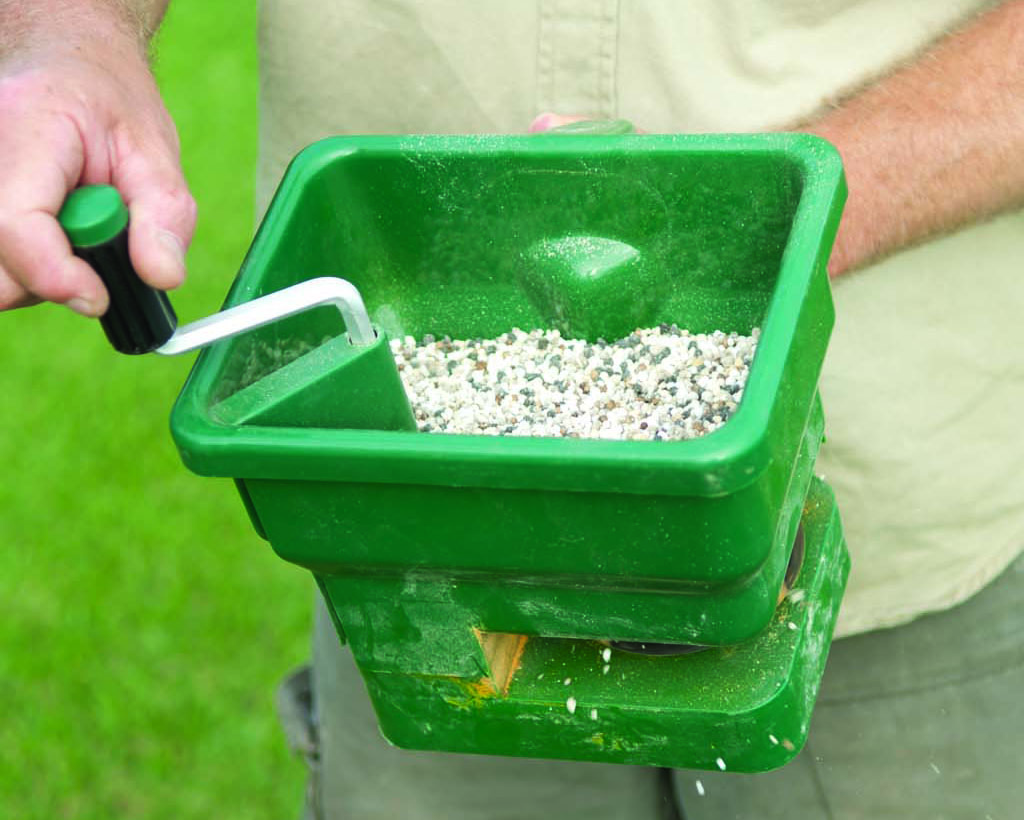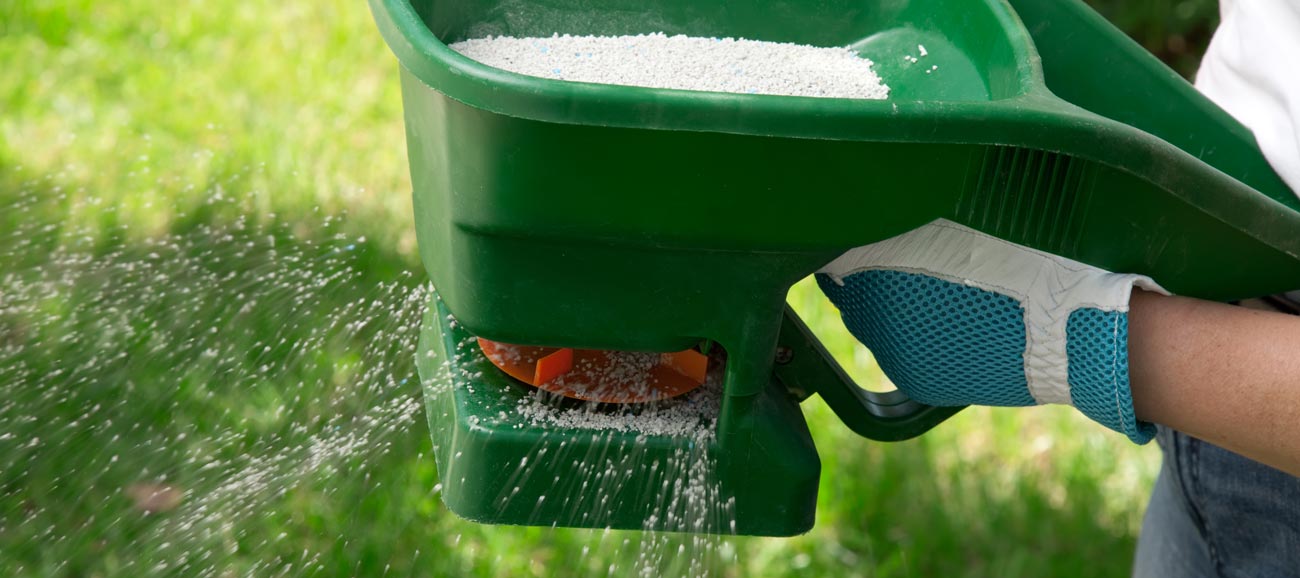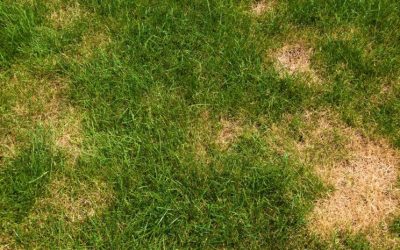What is the Best Winter Fertiliser for Lawn?
Should I fertilise in Winter?
There are a lot of questions surrounding seasonal fertilising and so many different answers that just add confusion to the conversation.
- Should I fertilse in Winter?
- What is the best lawn fertiliser for each season?
- Should I fertilise in winter?
- When should I put fertiliser on my lawn?
So, let’s clear that up once and for all!
Why is fertiliser an important part of lawn care?
While most nutrients can be found naturally in the soil, there are a few that are crucial for healthy lawn growth which may be lacking.
Fertiliser provides a mix of these essential nutrients.
Having a lawn with a thick growth habit means that it will be able to outcompete weeds and fend off potential disease.
There are a huge number of different fertilisers, all with a different mix of nutrients.
The main components of fertiliser are nitrogen, phosphorus and potassium, or N-P-K.
- Nitrogen is important as it fosters lawn growth and a healthy green colour.
- Phosphorus is important for early establishment and root growth.
- Potassium is key for helping your grass absorb nitrogen.
Every fertiliser will have a different ratio of these nutrients.
For example, a 10-10-10 will have an equal balance of these nutrients and a 70% make up of other macro-nutrients.
The best way to know which nutrients your soil is lacking is to do a pH test.
Once you know what your lawn needs, you’ll be able to work out which N-P-K ratio to choose.

What is the best lawn fertiliser for warm-season grasses?
There are a variety of choices for types of fertilisers.
These include conventional fertilisers, slow-release fertilisers and organic fertilisers.
Unless you’re trying to correct an immediate problem with your lawn, a slow-release fertiliser is the preferable choice.
- Slow-release fertilisers release nutrients slowly and continuously to provide a gentle feed over a longer period.
- Conventional fertilisers will give a surge of growth wherever they are dropped but tend to have a high rate of nutrient run-off into drains and waterways.
- Organic fertiliser is based on organic ingredients. Rather than dissolving in water, they decompose and slowly supply your lawn with nutrients.
There are a few other types of lawn care products such as lawn paint and pre-emergent herbicide that contain fertiliser in them which may be a good option if you’re tackling more than one issue at once.
When should I put fertiliser on my lawn?
Most lawn care experts advise that you fertilise four times a year, once each season.
As a general rule of thumb, this is correct. However, if you are looking to provide your lawn with nutrients when they will be most effective, there is slightly more thinking involved.
Firstly, yes, it is possible to over fertilise. It won’t necessarily cause harm but if your lawn is already growing well, you will simply waste the fertiliser you’re using.
As well as paying attention to how your lawn is performing, it’s a good idea to consider your local climate and seasonal changes.
How important is fertilising in spring?
Fertilising in spring is crucial as it helps your lawn bounce back after winter hibernation and then prepare for the heat of summer ahead.
As the soil warms up and your lawn comes out of hibernation, spring weeds will be waking up as well.
A slow-release fertiliser with a high percentage of nitrogen will enable your lawn to outcompete weeds as well as repair any damage from winter.
Should I fertilise in summer, even though my lawn has grown in spring?
Spring is the peak growth period for your lawn and it’s natural for it to grow vigorously.
However, it is still important to fertilise following this. Fertilising in summer will help your lawn maintain an even growth pattern as well as provide it with micronutrients it needs to remain healthy.
However, you should be mindful that you are more likely to get lawn burn from fertiliser during summer.
The hot days means that you need to water the fertiliser in much quicker than during the colder months.
Ensure you water the fertiliser in as quickly and thoroughly as possible in order to avoid this.
Is it important to fertilise in autumn?
Fertilising in autumn is easily the most important time for you to fertilise.
This will prepare your lawn for winter and hibernation. As days get shorter, your lawn will also get less energy from sunlight and will rely more on nutrients from the soil.
By using a slow-release fertiliser about mid-autumn, you’ll encourage thick lawn coverage and help your lawn stay as green as possible throughout winter.
You might consider using Oxafert, a pre-emergent herbicide, in the place of your usual autumn fertiliser.
This will not only add some necessary nutrients into the soil, but it will also stop winter weeds from germinating and invading your lawn.
Should I fertilise in winter?
A slow-release fertiliser at the beginning of winter will act as a pick-me-up until your lawn goes into hibernation.
However, if you fertilised towards the end of autumn, you may just wish to wait until spring.
There also isn’t much point in fertilising after mid-winter as your lawn won’t absorb it and the nutrients will just wash away in the rain.
If you are reaching the second half of winter and your lawn has lost its green colour, you may wish to use ColourGuard Plus.
As a lawn paint, this will instantly reintroduce green pigment into your lawn as well as some fertiliser.

How should I apply my lawn fertiliser?
Once you have chosen which fertiliser and when you want to use it, all you’ve got to do is apply it.
Always read the instructions on the packet to know how much to use and if there are any safety precautions.
You should also keep any pets or children off your lawn while you fertilise.
- Ideally, you will choose a cooler day when it will rain within 2 hours of applying the fertiliser. But if this isn’t possible, don’t fret.
- Check the instructions for how much fertiliser to use and spread this evenly over your lawn.
- For example, Sir Walter Fertiliser will only 25g for every square metre of lawn.
- Once you’ve applied the fertiliser, you must water it in thoroughly.
- If it will rain within a couple of hours, you can save time and water but if not, you need to use the hose to avoid lawn burn.

read more!
recent posts
What is the Best Grass for a Lawn? A Complete Guide to Top Choices
Discover the best grass options for your lawn with our complete guide. Make informed choices for a lush, healthy yard. Read more to find your ideal grass!
Choosing the Right Weed Killer for Your Sir Grange Zoysia Lawn
Discover the best weed killer for Sir Grange Zoysia and essential tips for effective application. Enhance your lawn’s health and beauty!
Why Is My Zoysia Grass Dying? Common Causes and Solutions to Revive It
Is your Zoysia grass struggling? Discover common causes of decline and effective solutions to restore its health. Read the article for expert tips!
How To Repair Zoysia Grass
Learn effective solutions to repair Zoysia grass and achieve a lush, healthy lawn. Discover practical tips and techniques to restore your yard today!




